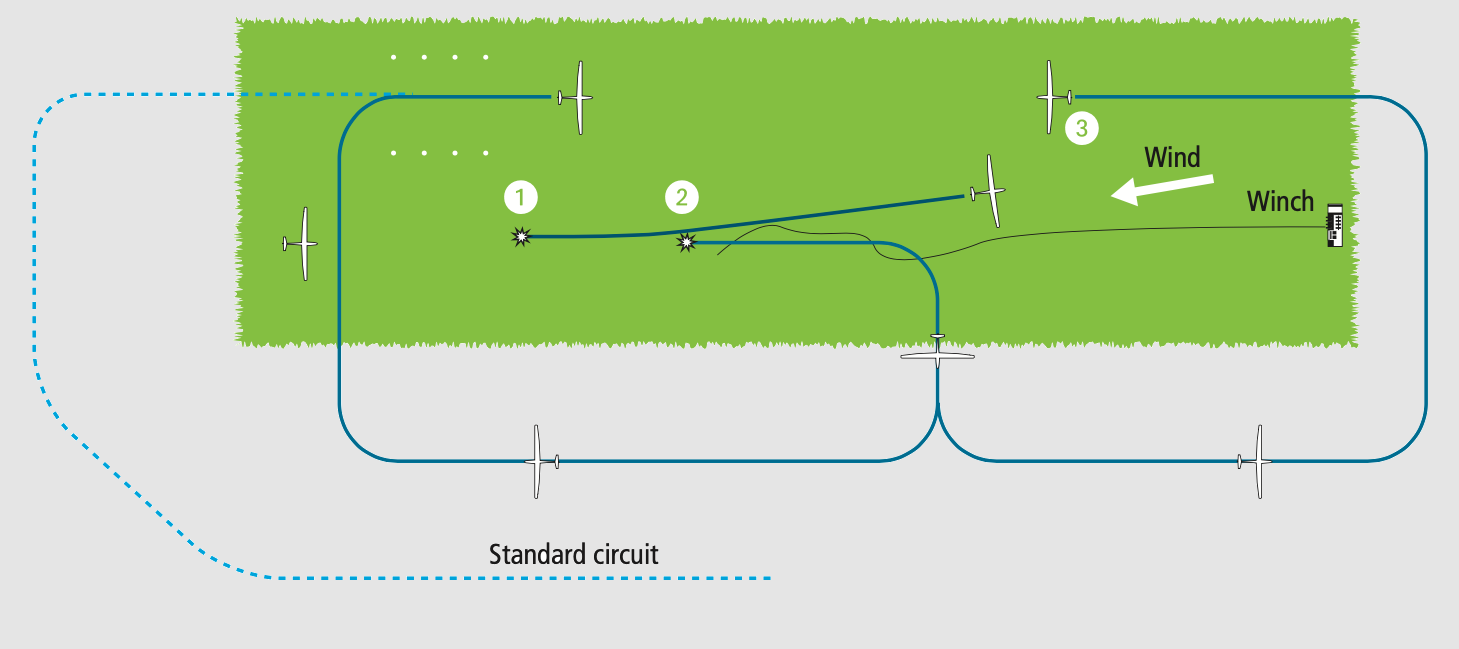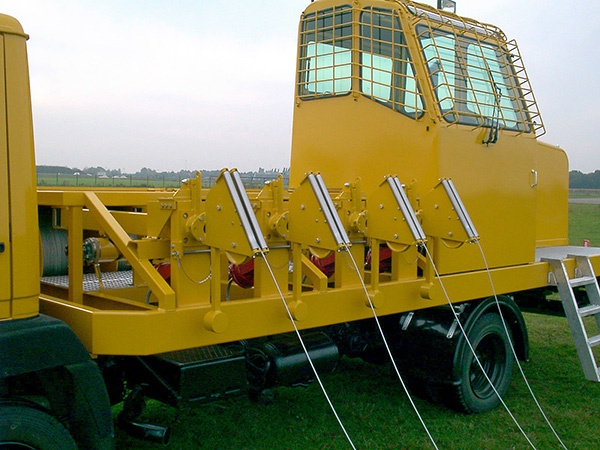4. LESSON 28 - WINCH LAUNCHING - EMERGENCY PROCEDURES
Key points:
- Plan and discuss eventualities before every launch
- After every launch failure, push the stick forward first to get approach speed
- Maintain that speed
- Land ahead if it is safe to do so
This lesson describes the decisions and actions required after a launch failure at any height. Before every winch launch, your instructor and you should plan and discuss how to respond to a possible launch failure at any altitude. This is covered in the ‘eventualities’ part of the pre-flight checks. Take into account circumstances such as local features, wind direction and strength and possible landing areas. You should always have a recovery speed nominated and a direction of turn if landing ahead is not possible.
Preparing for a launch failure on every launch is vital. By preparing for the unexpected, you will be able to make the right decision and react appropriately if a launch failure does occur. A launch failure can happen for a number of reasons, such as a weak link failure, an actual launching cable failing or a winch engine power loss.
During training you will practise several launch failure procedures. At first, your instructor will brief you and show you what to do. Later on, when you are more experienced, they will initiate surprise failures to assess how you react.
Noticing that the launch has failed can be easier in some circumstances than others. Sometimes you might hear a loud clunk but a power failure is much more subtle; always ensure you are monitoring the launch closely so that you can react to a launch failure without delay.

2 Wait to gain approach speed
Do not rush.
3 First choice: land ahead
You will have considered your options during your eventualities brief. Now that you have to make a decision, what options do you have? As it is the safest first option, you should ask yourself by looking at the space available (not at the altimeter): ‘can I land ahead?’ (1)
4 Maintain Speed
Throughout the launch failure recovery and approach you should always ensure you have enough speed. Never let it drop below the agreed value.
5 Release cable
Sometimes the cable will release automatically in a launch failure, but always double check you have released any cable attached to the glider.

MODIFIED CIRCUIT
At many sites, depending on the circumstances, you may be able to conduct a more or less modified circuit. The decision to turn in is then the same as the one to be made when running out of height in the circuit. Where possible the final turn should normally be completed at the same height as any other final turn you would do when running out of height. (2) Small, difficult sites may require exceptional options such as landing downwind (3) or even off the airfield.

The winch is equipped with a cable cutting mechanism for emergencies: the guillotine. If the glider is, for some reason, unable to release the cable the winch driver will cut the cable. The guillotine is an additional safety feature and it is almost never used.
Every launch failure is unique. Your instructor will show you a number of different scenarios so that you are able to deal with any eventuality. If too high to land ahead but too low for even a short circuit to be comfortable, the airfield layout may permit a landing in the immediate vicinity that can be reached safely with a few changes of direction and from a low altitude.


